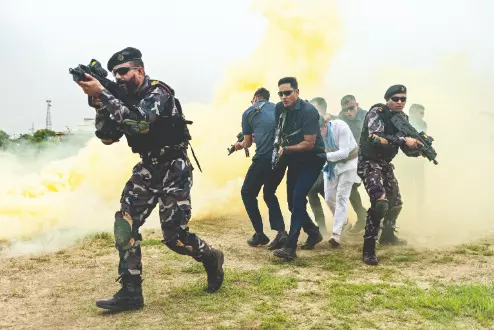CISF ‘substantially’ upgrades Parliament security, brings in airport-style protocols

NEW DELHI: In the wake of the December 2023 security breach, CISF has substantially expanded its mandate for the security of the Parliament House complex, completing a phased takeover of all critical security layers on May 20. The enhanced mandate pertains to access control, perimeter and internal security, counter-terror and counter-sabotage response, bomb-threat management, and fire and disaster preparedness—a comprehensive security upgrade for Parliament in recent times.
A reinforced contingent of over 3,300 CISF personnel, including over 200 fire and disaster management specialists, has been deployed across the complex. Airport-style protocols such as advanced frisking systems, X-ray baggage screening, and multilevel access verification have now been fully implemented. The force is also expanding its capabilities to counter emerging threats by introducing specialised modules in drone defence, cybersecurity, CBRN response, and battle-inoculation training conducted in collaboration with the National Security Guard and elite Indian Army units.
Accordingly, CISF has implemented a revised posting policy as part of restructuring to enhance stability, continuity of operations, and suitability of personnel. The average tenure for Parliament duty has been increased from three to four years, extendable by one more year on performance and suitability. A fixed percentage of the sanctioned strength will be rotated every year to achieve an optimal balance between continuity and the induction of fresh personnel. Extended tenure would help in better familiarity with Members of Parliament and their movement patterns and also the complex layout, which are basic essentials to build accurate identification, secure access management, and layered threat detection.
New eligibility norms underline the sensitivity of Parliament duty. A person should have a clean service record, a SHAPE-I medical category, no disciplinary or vigilance cases, and at least two specialized courses completed. There are also rank-specific age criteria. Multi-stage screening—psychological assessment, Battle Physical Efficiency Test (BPET), PHC-specific induction training, and comprehensive security clearance—has been made mandatory to ensure that only the most capable officers are deployed.
Training and preparedness continue to be the cornerstones of the revised security architecture. Personnel training is imparted continuously on-site and off-site during the intersession periods, including NSG customized courses at Manesar, counter-terror training with the Indian Army in Srinagar, CAT and sniper courses at RTC Behror, CRT programs at NISA, and armed-support training at different CISF centres. High-intensity mock drills relating to CBRN attacks, intrusion of drones, cyberattacks, terror strikes, bomb threats, evacuation operations, and air-contamination situations are regularly conducted, with fire contingency elements integrated with every module. Night firing drills have also been introduced to enable the personnel to achieve better aiming with a reduction of light.



